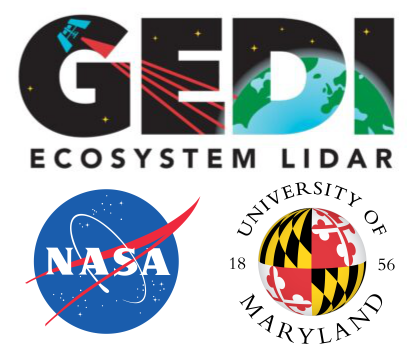Global Ecosystem Dynamics Investigation (GEDI) L3 Gridded Land Surface Metrics
OT Collection ID: OT.032022.4326.1
OT Collection Name: Global Ecosystem Dynamics Investigation (GEDI) L3 Gridded Land Surface Metrics
Short Name: GEDI_L3
Collection Platform: Satellite Data
| GEDI L3 | Bulk Download Global API | opentopoID: OTSDEM.032022.4326.1 |

The Global Ecosystem Dynamics Investigation (GEDI) produces high resolution laser ranging observations of the 3D structure of the Earth. GEDI's precise measurements of forest canopy height, canopy vertical structure, and surface elevation greatly advance the ability to characterize important carbon and water cycling processes, biodiversity, and habitat. GEDI was funded as a NASA Earth Ventures Instrument (EVI) mission. It was launched to the International Space Station in December 2018 and completed initial orbit checkout in April 2019.
This dataset provides Global Ecosystem Dynamics Investigation (GEDI) Level 3 (L3) gridded mean ground elevation, and mean canopy height per 1 km x 1 km grid cells globally within -52 and 52 degrees latitude. These L3 gridded products were derived from Level 2 (L2) geolocated laser footprint return profile metrics from the GEDI instrument onboard the International Space Station (ISS). Ground elevation is provided as the mean elevation (in meters) of the center of the lowest waveform mode relative to the WGS84 reference ellipsoid. Canopy height is provided as the mean height (in meters) above the ground of the received waveform signal that was the first reflection off the top of the canopy (RH100). L3 gridded products can be used to characterize important carbon and water cycling processes, biodiversity, habitat and can also be of immense value for climate modeling, forest management, snow and glacier monitoring, and the generation of digital elevation models. This dataset version uses Version 2 of the input L2 data, which includes improved geolocation of the footprints as well as a modified method to predict an optimum algorithm setting group.
Note: The version of the GEDI data hosted on OpenTopography has been reprojected into the World Geodetic System 1984 (EPSG:4326)
For more details on the GEDI project go to the GEDI homepage
For more details on the GEDI L3 Gridded Products, go to the NASA ORNL DAAC
Dataset Acknowledgement: This work was funded by NASA Earth Ventures Instrument (EVI) mission (contract NNL15AA03C) to the University of Maryland for the development and execution of the GEDI mission (Dubayah, Principal Investigator).
Dataset Citation: Dubayah, R.O., S.B. Luthcke, T.J. Sabaka, J.B. Nicholas, S. Preaux, and M.A. Hofton. 2021. GEDI L3 Gridded Land Surface Metrics, Version 2. ORNL DAAC, Oak Ridge, Tennessee, USA. Distributed by OpenTopography. https://doi.org/10.3334/ORNLDAAC/1952. Accessed 2025-12-28
Copied to Clipboard
Use License: EOSDIS Data Use Policy
Dataset Keywords: lidar, ecosystem, ISS, canopy, waveform, RH100, biodiversity, carbon
Survey Date: 04/18/2019 - 01/19/2022
Publication Date: 02/13/2023
Funder Partner Collector
Area: 106,879,880 km2
Raster Resolution: 1000 meter
Coordinate System:
Horizontal: WGS84 [EPSG: 4326]
Vertical: WGS84 Ellipsoid [EPSG: 4979]
Units: meter
Survey Report: Reports
Dataset Extent (Bounding Box): North: 52.6881288200366° South: -52.6881288200366° East: 179.9999999996° West: -179.9999999996°
